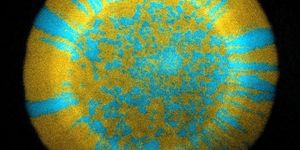A technique used to clear blood clots from arteries to the heart in about 20 percent of patients undergoing angioplasty appears to increase the risk of stroke without providing the intended benefit, according to researchers.
A new study, which included more than 10,000 patients undergoing angioplasty in response to a severe heart attack, randomly assigned half of the patients to receive angioplasty alone and half to receive angioplasty with manual thrombectomy, in which the surgeon uses a syringe to create suction to remove clots. Mechanical thrombectomy was not tested.

After six months of follow-up, researchers found no differences between patients who received angioplasty alone versus those who also received manual thrombectomy in terms of the study's primary endpoint, a composite of the rates of cardiovascular death, subsequent heart attack, cardiogenic shock and the most severe category of heart failure.
"The message from this study is that thrombectomy should not be used as a routine strategy," says Sanjit Jolly, MD, associate professor and interventional cardiologist, McMaster University, Hamilton, Ontario, Canada, and the study's lead author. "Given the downsides we observed, the findings suggest thrombectomy should be reserved as a bailout therapy to be used only when an initial angioplasty attempt fails to open up the artery."
In the study, bailout thrombectomy was performed in 7 percent of the patients assigned to receive angioplasty alone.
A heart attack occurs when a blood clot blocks the heart's coronary artery. Angioplasty is used to clear the blockage by threading a device to the coronary artery through an artery in the groin or arm. Once the device is near the site of the blockage, it inflates or expands to push aside plaque and open the artery. More than one million people in the United States undergo this procedure each year.
Thrombectomy is an additional technique that can be combined with angioplasty in which the cardiologist creates suction to remove blood clots from the artery. It has been thought that removing clots in this way could reduce the likelihood of subsequent heart attacks or other problems. Current guidelines leave it to physicians to decide whether to routinely perform thrombectomy during angioplasty or use it only as a backup strategy in cases where the angioplasty fails to open the blockage.
The study showed a statistically significant increase in stroke in the thrombectomy group. It is possible that removing a blood clot from the heart could increase the risk that the clot will be lost during the removal process and eventually travel to the brain, causing a stroke, but this explanation would likely apply only to strokes that occur soon after the procedure, Jolly says. The relatively small number of strokes observed in the study within 30 days - 33 patients, or 0.7 percent, in the thrombectomy group and 16 patients, or 0.3 percent, in the control group - leaves open the possibility that the finding was due to chance alone.
The researchers saw no difference in outcomes based on the size of the blood clots, despite previous speculation that the procedure might be particularly beneficial in patients with larger clots.
"There are still open questions that aren't resolved by our study, and this procedure could still be beneficial for a small subset of patients," Jolly says. "Clearly, for patients who fail an initial angioplasty attempt, thrombectomy may be very important and is really the only way to open up the artery. We did not design the trial to test the effectiveness of selective or bailout thrombectomy."
All of the thrombectomies performed in the study were done using an approach known as manual thrombectomy, in which a syringe attached to a tube is used to create suction to remove the clot. Mechanical thrombectomy was not tested.
Previous smaller studies have suggested benefits of routine thrombectomy or showed mixed results, but these studies involved fewer patients and some were limited to a single hospital. This study included patients from 87 hospitals and 20 countries.
"Our findings illustrate the importance of doing large trials," Jolly says. "There are many things in clinical practice that we believe are beneficial but need to be tested in large randomized trials. Only by doing this can we be certain of what helps patients and move the field forward."
[Source: American College of Cardiology]









